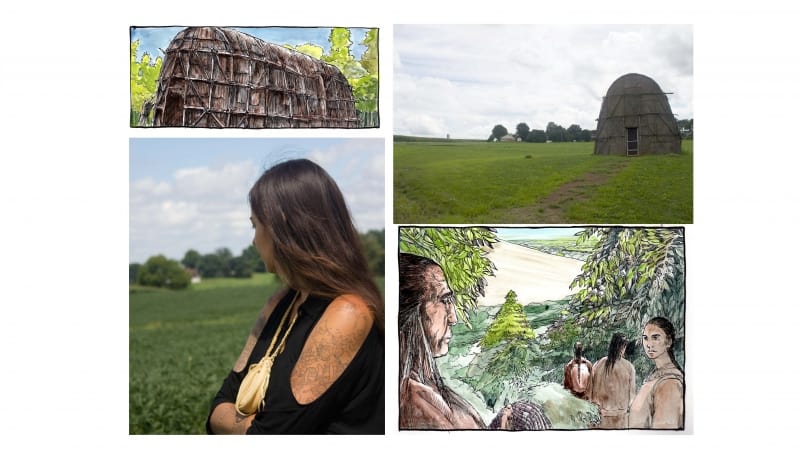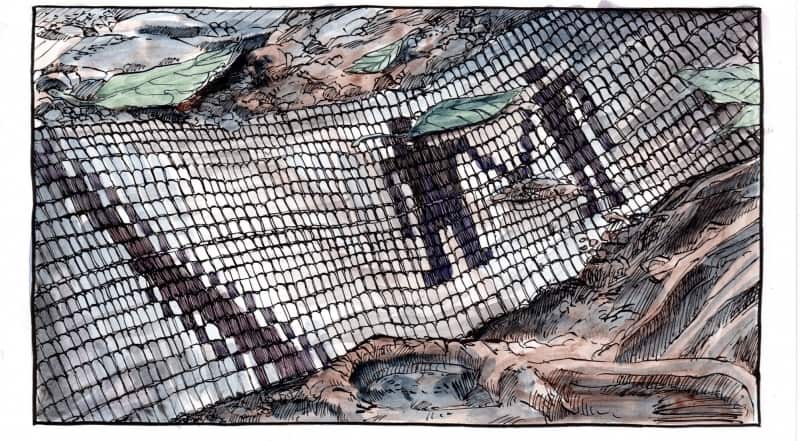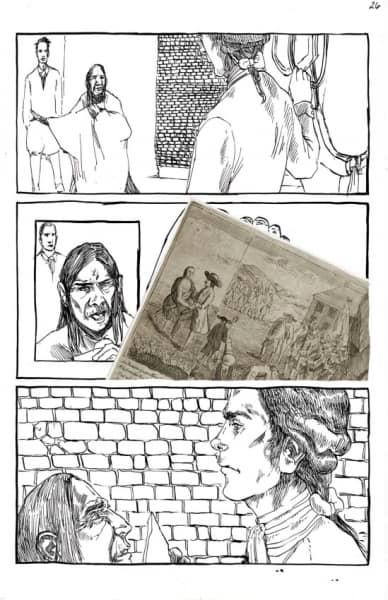Digital Edition(s): It Takes a Village
As Weshoyot Alvitre delivers the final painted pages of Ghost River: The Fall and Rise of the Conestoga, I’ve begun to think about the next instantiation of the graphic novel: the digital edition. From the beginning of Redrawing History, our team was committed to making the graphic novel freely available online. What that looks like has been less clear, however. Might it be a pathway in Digital Paxton, a PDF that students could download and print, or something else entirely? In a sense, we settled on all three.
Ghost River has already made its imprint on Digital Paxton. Thanks to the support of The Pew Center for Arts & Heritage, I’ve finally had the resources to scan hundreds of pages of manuscript material, including, most recently, more than two dozen, never-before-digitized letters concerning Conestoga Manor at the Pennsylvania State Archives. Two interpretive essays that I commissioned for Ghost River have also joined the site’s historical overview pathway: Judith Ridner (Mississippi State University) attends to the visual culture of the Paxton pamphlet war, and Scott Paul Gordon (Lehigh University) discusses the wealth of manuscript records available to researchers. I expect Digital Paxton will continue to grow with the development of the graphic novel, art exhibition, and teacher’s institute.
While we intend to make Ghost River available as a straightforward PDF, our team has opted to construct a more immersive and contextual edition that will surface archival materials from Digital Paxton, photos from our research trips, and videos from the documentary team. But make no mistake: None of this would be feasible without the support of numerous stakeholders inside and outside the project team. With this post, I want to highlight the efforts of three contributors who are making this digital edition possible.
First, I want to acknowledge the stunning work that intern Emma O’Neill-Dietel accomplished in just a few brief weeks at the Library Company. After reviewing nearly all of the primary and secondary source material related to the project, which includes everything on Digital Paxton and the Redrawing History website, Emma perused all of the raw video footage that Mangrove Media has captured over the past year. This amounts to hours of footage from our research trips last August, Indigenous Comic Con 2018, Jim Thorpe Sports Day 2019, and interviews with Weshoyot, Lee, and members of the Circle Legacy Center. Emma then annotated the Ghost River script with relevant primary, secondary, and documentary materials that will serve as the basis of the digital edition. She even authored an annotated essay that will explore efforts toward decolonization at cultural heritage institutions.
Using the time stamps that Emma has associated with pages from the script, Ann McShane, Redrawing History’s Digital Resources Coordinator, is exporting every individual video file and instituting a coherent, web-friendly naming convention. This is no small feat: Ann is working with high resolution video and creating dozens of carefully-edited clips that we can integrate into the digital edition.
Finally, I would be remiss if I didn’t acknowledge the labor of the Library Company’s Visitor Services Coordinator, Katie Maxwell. Despite the fact that she isn’t even listed on the project team, Katie has offered to help us improve the accessibility of the digital edition by authoring alt text descriptions of video files. While this kind of metadata might sound esoteric, it’s critical to supporting accessibility tools such as screen readers.
The Ghost River digital edition simply wouldn’t be possible within this timeframe or to this degree of complexity without the expertise and labor of Emma, Ann, and Katie. I’m grateful for their contributions, and I can’t wait to see how students, teachers, and friends of the Library Company use the forthcoming digital edition.
Redrawing History: Indigenous Perspectives on Colonial America has been supported by The Pew Center for Arts & Heritage.








